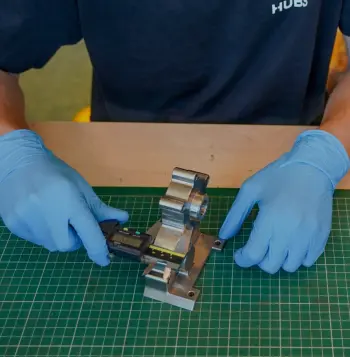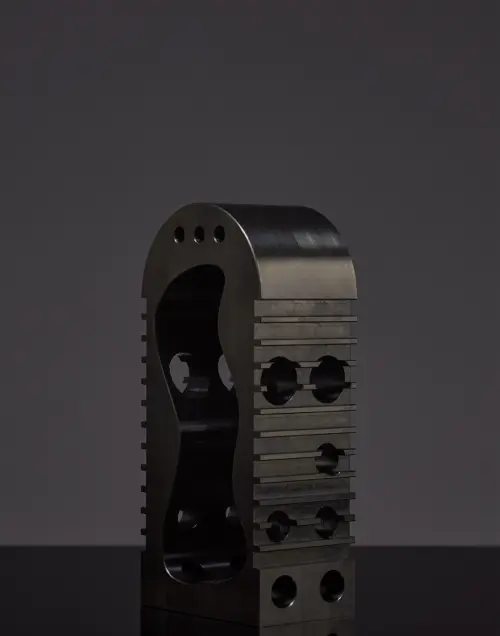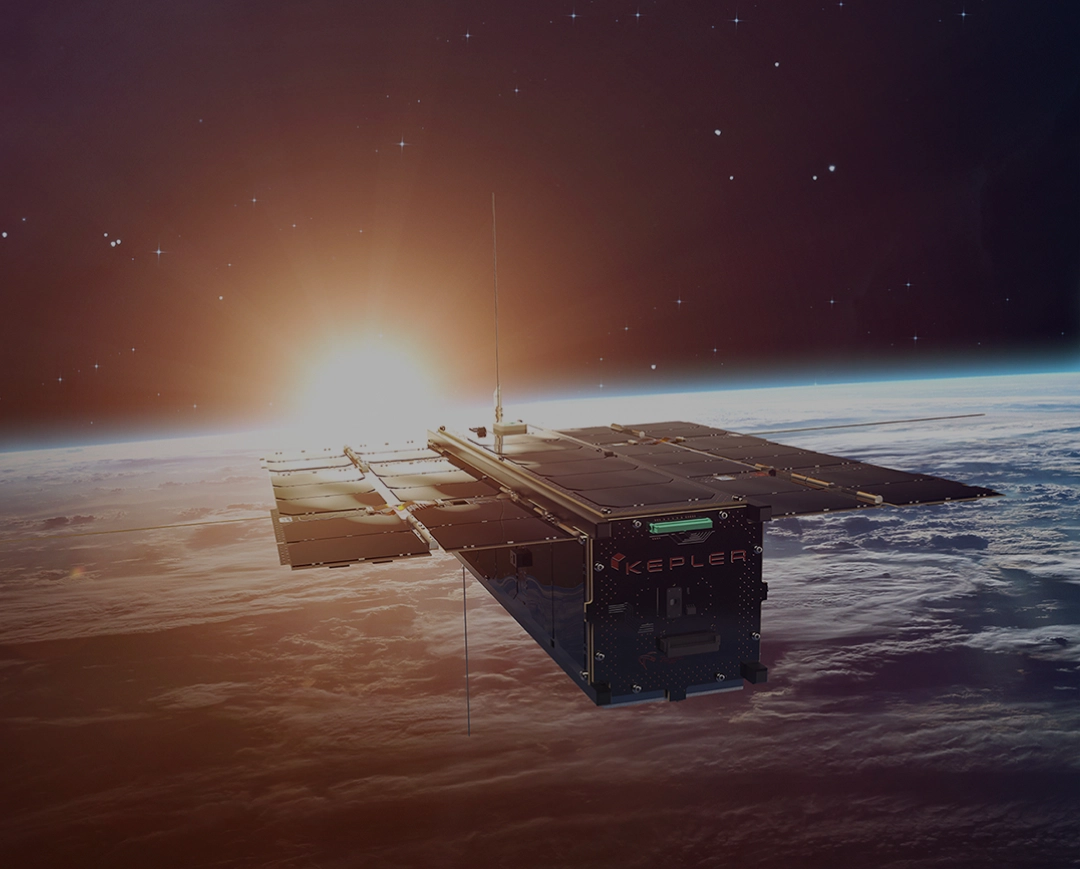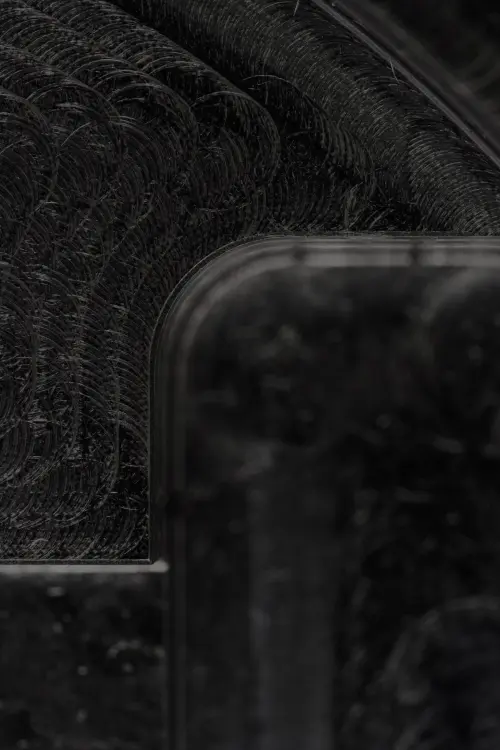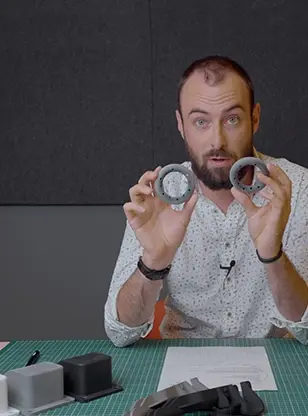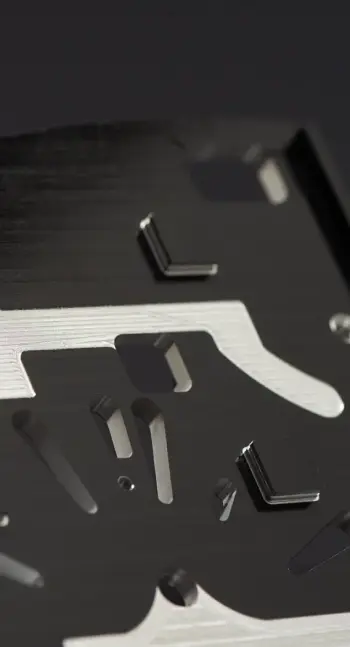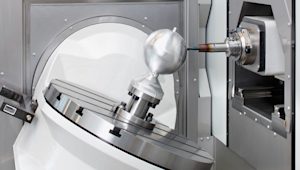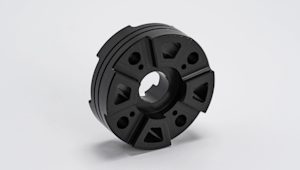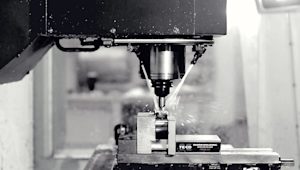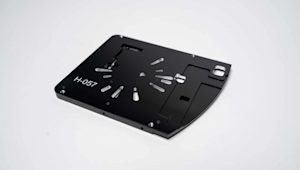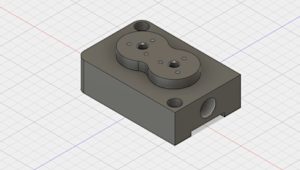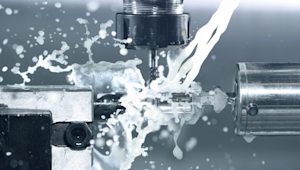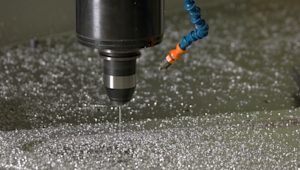What is 5-axis CNC machining?
Five-axis CNC machining is a type of computer-controlled manufacturing where the cutting tool moves along three linear axes (X, Y, Z) and two rotational axes to shape a part. This allows the tool to reach multiple faces and angles in one go. Standard CNC machines typically operate along just three axes, which means the tool can only cut from above or the sides unless the part is manually repositioned. With 5-axis, the tool or part rotates instead—saving time, improving accuracy, and making it easier to machine complex or curved features. Interested in the different types of CNC machines? Check out our video guide to CNC machines.
How 5-axis differs from 3- and 4-axis machining?
Five-axis CNC machining includes two rotational axes, allowing the tool or part to tilt and rotate so that multiple sides can be machined in a single setup—without needing to stop and re-fixture. Compared to 3-axis machines, which move only in straight lines along the X, Y, and Z axes, and 4-axis machines, which add a single rotation, 5-axis offers a second rotational axis that dramatically increases flexibility. Depending on the machine configuration, 5-axis machining can rotate either the part, the tool, or both, giving you access to hard-to-reach areas in one setup. This matters a lot when you’re working with detailed geometries, sharp corners, or deep cavities. Imagine carving a sculpture. With 3-axis, you're chiseling one side at a time. With 5-axis, you can rotate both the sculpture and your chisel as you go—no need to stop and reposition.
When to use 5-axis over 3- or 4-axis
-
Your part has awkward angles or deep pockets that are hard to reach.
-
You need fewer setups to maintain tight tolerances.
-
The surface finish has to be perfect and you want smoother passes.
-
You’re prototyping something complicated or producing parts with lots of detail.
How 5-axis CNC machining works?
Five-axis CNC machines work by moving the cutting tool or the part along five different axes—three linear (X, Y, Z) and two rotational. The rotational axes are chosen from A, B, and C, which represent rotation around the X, Y, and Z axes, respectively. A 5-axis machine uses two of the three possible rotational movements, depending on its configuration. Some machines rotate the part itself, others move the tool head, and some do both. There are also 6-axis machines that add a third rotational axis, enabling movement around all three linear axes, but they’re still relatively niche. The 5-axis setup already lets the tool tilt and pivot into hard-to-reach areas, without needing to stop and flip the part. That’s often all you need, even for contoured shapes, undercuts, or complex geometry.
Regardless of how a 5-axis machine is configured, the result is the same: the tool can approach the part from multiple directions in a single machining pass. This flexibility is what makes 5-axis machining especially powerful for complex surfaces and features that would otherwise require multiple setups. There are two common styles of operation:
-
Indexed (3+2): The tool or part rotates to a fixed angle, then traditional 3-axis machining happens from there.
-
Continuous (simultaneous 5-axis): The tool keeps moving in all five directions as it machines. This is what you’d use for smooth, contoured surfaces.
Learn more in our complete guide to CNC machining.
Applications and industry use cases
You’ll find 5-axis machining wherever engineers are working with tight tolerances, organic shapes, or challenging geometries:
-
Aerospace manufacturing: Aircraft components often have aerodynamic surfaces, organic curves, and internal channels that are difficult to reach with 3-axis tools but can be delivered through 5-axis machining.
-
Medical manufacturing: Surgical instruments and orthopedic implants require perfectly smooth surface finishes and anatomically accurate shapes. Five-axis machining can follow organic contours with high repeatability, which is especially useful for custom-fit prosthetics or bone plates.
-
Automotive manufacturing: For performance parts like turbo housings, mold cavities, and prototype engine blocks, 5-axis machining reduces the need for multiple setups.
-
Electronics manufacturing: Enclosures and connectors often require 5-axis machining for precision cuts on multiple faces and tight fit between components.
-
Robotics & automation: Robotic assemblies may demand 5-axis machining for highly detailed parts with multi-surface precision—especially in grippers, joints, and frames.
-
Industrial machinery: Custom machine parts often have mounting holes, recesses, or angled surfaces that must align perfectly. With 5-axis machining, these features can be milled in one go, improving mechanical alignment and part functionality.
Advantages of 5-axis CNC machining
There’s a lot to like about this dynamic manufacturing setup. Here are some of the reasons engineers choose 5-axis machining.
-
Fewer setups: Machine all sides of a part without stopping to reposition.
-
Better surface finish: Tool stays at optimal angles for a cleaner cut.
-
Tighter tolerances: Less movement means higher accuracy.
-
Supports complex shapes: Get curved, angled, or organic features.
-
Simpler assemblies: Design parts as one solid piece instead of several glued or bolted together.
-
Longer tool life: Smart angles reduce stress and heat on the cutting tool.
Limitations of 5-axis CNC machining
As powerful as 5-axis machines are, they’re not always the right tool for the job. Here’s what to keep in mind.
-
It may not be cheap: The machines are more expensive and need specialized operators.
-
Programming is trickier: More axes mean more complex toolpaths.
Too much machine for simple parts: If you’re just cutting a cube, 5-axis might be overkill. -
Quality checks matter: Extra movement can result in more simulation or inspection work.
Design tips for 5-axis CNC machining
Designing for 5-axis isn't just about avoiding mistakes—it's about taking advantage of everything this type of machine can do.
-
Make sure features are reachable from multiple angles. Position holes, slots, or pockets in locations that don't require extreme tilt angles. Even 5-axis machines have limits.
-
Think about how the part will be held in place as it rotates—5-axis machines still need stable, accessible fixturing to get the angles right.
-
Consolidate parts when it makes sense. With 5-axis access, you can often combine multiple components into a single, more complex geometry.
For more guidance, browse through our Knowledge Base collection about designing for CNC or read our CNC machining DFM guide.
How the technology is evolving
Although the first 5-axis CNC machines were developed in the late 1950s for aerospace applications, the technology didn’t see widespread use until the 1990s when digital control systems became more affordable and sophisticated. Since then, 5-axis capabilities have become essential in sectors that need tight tolerances and part complexity. Today, innovation is accelerating. Here are a few standout developments transforming the space:
-
AI-assisted CAM software: These tools use artificial intelligence to automatically generate toolpaths based on part geometry and material. While they’re helpful for all CNC workflows, they’re especially useful for 5-axis machining, where toolpaths are more complex and harder to program manually.
-
IoT-enabled machines: Machines equipped with sensors and connected software can track spindle speeds, vibration, thermal loads, and wear in real time. This allows for predictive maintenance, which is especially critical in high-volume production.
-
Digital twins: These are virtual replicas of physical parts and machining environments used for simulation and planning. Before a part even hits the machine, engineers can model how it will be cut, reduce collisions, and refine toolpaths.
-
Smarter tooling: Advanced cutting tools now include coatings (like TiAlN or diamond), internal coolant channels, and geometries optimized for exotic materials. This expands what’s possible with 5-axis machines, including improved surface finishes and higher-speed machining of titanium, Inconel, and composite parts.
-
Cloud-based quoting and manufacturing networks: Platforms like Protolabs Network now automatically match part geometry with the manufacturing option, reducing quoting time from days to minutes.
What’s next for 5-axis machining?
-
Greater integration of AI into not just CAM but shop floor decision-making (like automatic rescheduling based on tool wear).
-
More affordable entry-level 5-axis machines for small-batch or startup manufacturers.
-
Enhanced machine learning from data generated during production to fine-tune tolerances and surface finishes in real time.
-
Easier-to-use interfaces that lower the barrier for CAM programmers and designers.
Get a Quote
Ready to see what 5-axis machining can do for your parts? Upload a CAD file to get a free, instant CNC machining quote.
Frequently asked questions
What tolerances can 5-axis CNC machining achieve?
We can typically offer as tight as ±0.020 mm but custom tolerances are available on request.
Is 5-axis machining always more expensive?
Not always. You might pay more per hour, but you save time and setups—so the total cost can be lower.
What materials can be used?
There’s a wide range of CNC machining metals and plastics that will work for 5-axis, including aluminum, titanium, stainless steel, POM, PEEK, nylon, and more.
What’s the lead time?
Anywhere from a couple of days to a few weeks depending on part complexity.
How do I know if my part needs 5-axis?
If your design has angled holes, curved surfaces, or needs to be machined in one piece, it’s probably a good fit for 5-axis machining.
